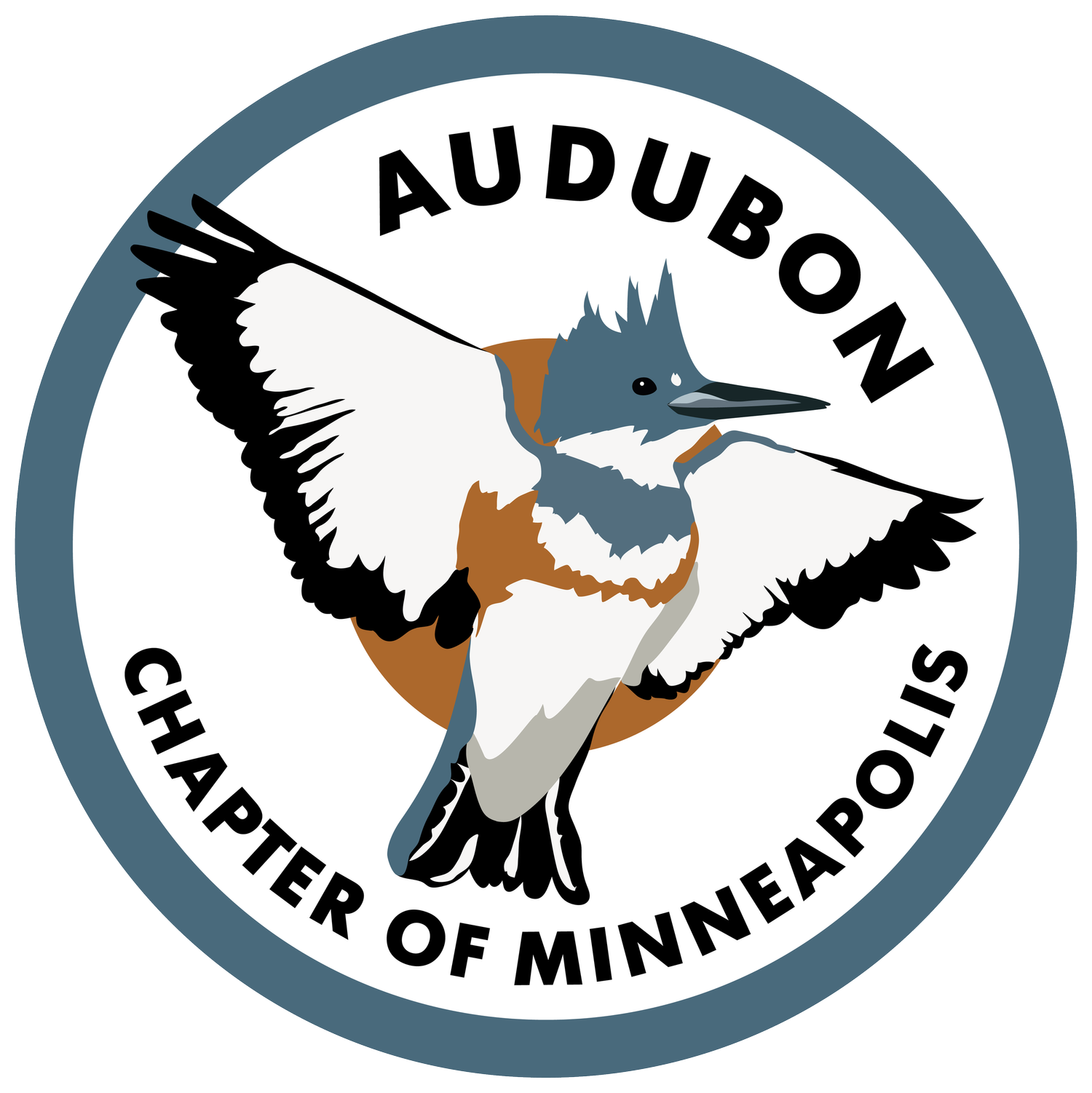
Conservation & advocacy committee
Mission
The mission of the Bird Conservation and Advocacy Committee of Audubon Chapter of Minneapolis is to advocate for science-based policies and actions to protect birds and their habitats.
Priorities
Our priorities are to:
1) Encourage policies and actions that minimize the dangers that directly lead to bird deaths, and
2) Encourage policies and actions that improve conditions to allow birds to flourish in the local environment.
Committee Description
The Advocacy Committee at the Audubon Chapter of Minneapolis (ACM) advocates for actions and policies that address the most urgent threats to birds within the urban environment, whether they are permanent residents or seasonal migrants passing through twice a year.
Our advocacy efforts are focused on the three major drivers of bird population decline:
mitigating threats such as glass collisions and predation by cats at large
reducing pesticide use
mitigating habitat destruction while promoting habitat restoration.
Committee Chair: Jeannine Thiele
Welcome birds to your yard with native plants. Download and print our user-friendly guide:
Creating Bird-Friendly Habitat: A Native Plant Guide For Central Minnesota
THE SAD, POWERFUL SCIENCE OF GLOBAL BIRD COLLISION MAPPING
Citizen scientists document bird deaths from window strikes for data-driven advocacy.
COLLECTING CASUALTIES: MONITORING BIRD-BUILDING COLLISIONS
What is it like to be a citizen scientist for Global Bird Rescue? A volunteer shares her experience.
LIGHTING OURSELVES SICK: IMPACTS OF LIGHT POLLUTION ON AVIAN HEALTH
Light pollution is the excessive or poor use of artificial outdoor light at night, which disrupts natural patterns of wildlife and human sleep, contributes to the increase of carbon dioxide in the atmosphere, and obscures stars in the night sky. Professor of Biology Jenny Ouyang shares the impacts of an increasingly lit world on ecosystem function, global health, and biodiversity.
BIRD SAFETY IN THE BUILT ENVIRONMENT
Building glass and lighting can be deadly hazards for birds, killing hundreds of millions of birds every year in the United States alone. Building-related bird deaths are largely preventable through building design and retrofit.
THE MISSISSIPPI FLYWAY BRINGS BIRDS TO OUR CITY
While we tend to view cities through the lens of industry and development, urban areas on migration routes play a critical role in bird conservation. City planning, design, and management contribute significantly toward migratory bird mortality rates, particularly as result of light pollution and building collisions.
ARE WE EXPERIENCING THE END OF NIGHT (AND WHY WOULD BIRDS CARE)?
Using a blend of personal narrative, natural history, science and astronomy, Bogard shares the importance of darkness to humans and wildlife—what we've lost, what we still have, and what we might regain—and the simple ways we can reduce the brightness of our nights tonight to benefit not only ourselves, but birds and other animals as well.
PROTECTING URBAN WILDLIFE FROM DOMESTIC CATS: A DATA-DRIVEN APPROACH TO REDUCING CONFLICT
What happens to wildlife when cats go outside? How do bird and wildlife populations fare when they face a new predator evolution has not equipped them to evade? What does new research say about the impact of cats on local wildlife? Join urban ecologist Dan Herrera to discuss the threats to Minneapolis cats and wildlife, the relationship between cats and declining bird populations, and the steps you can take to keep cats, birds, and other wildlife safe.




